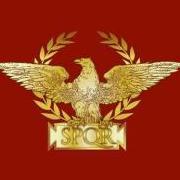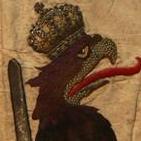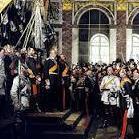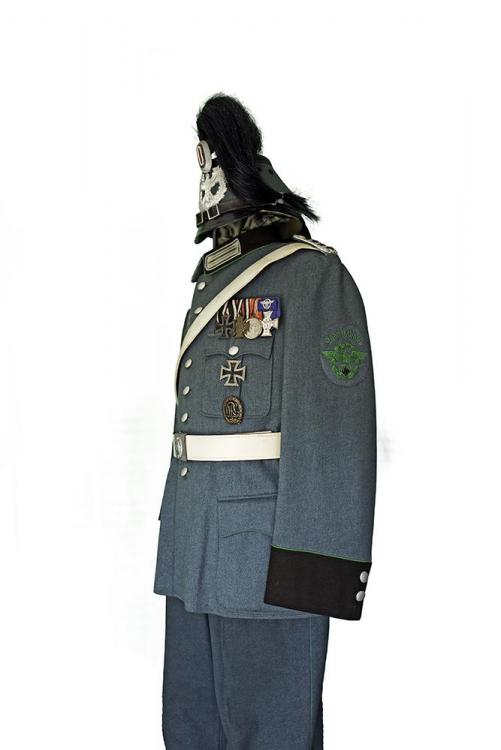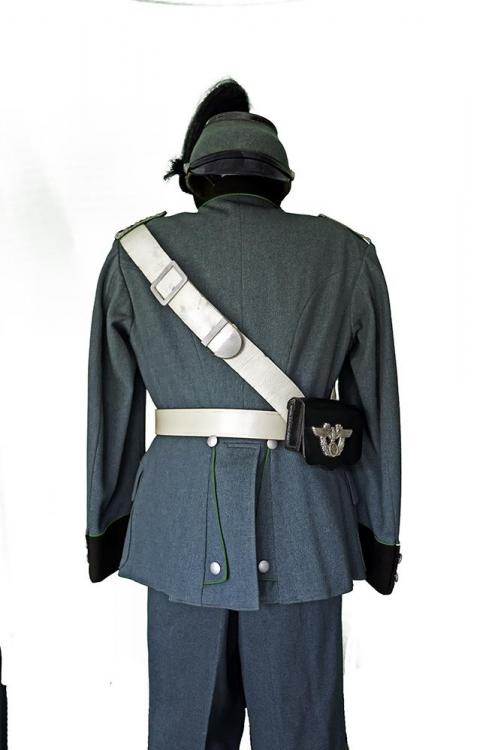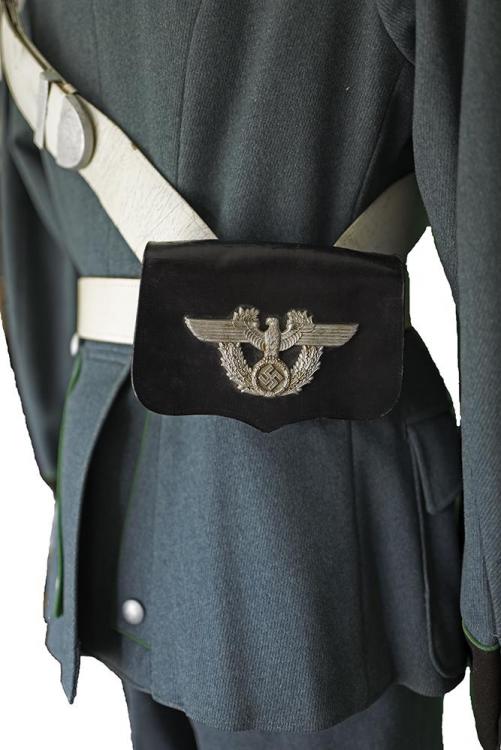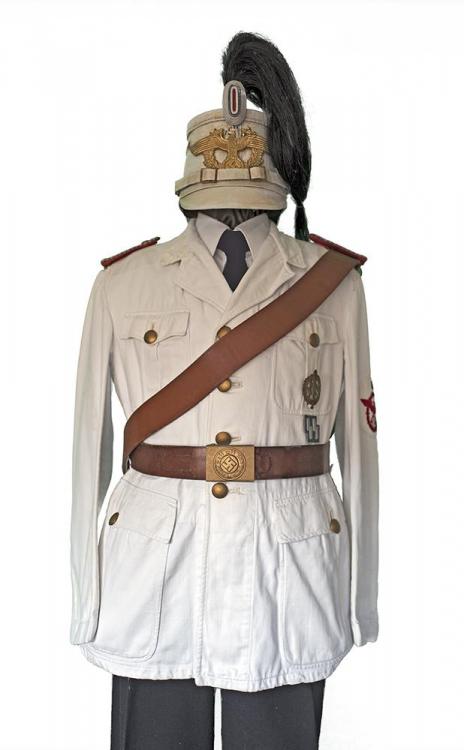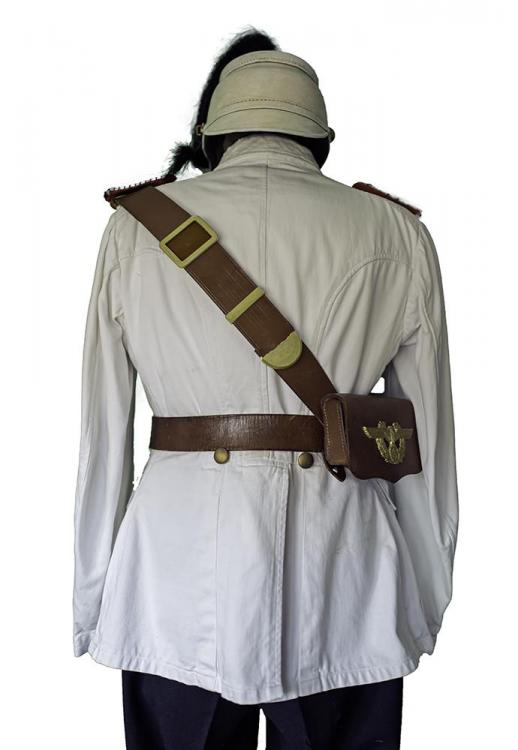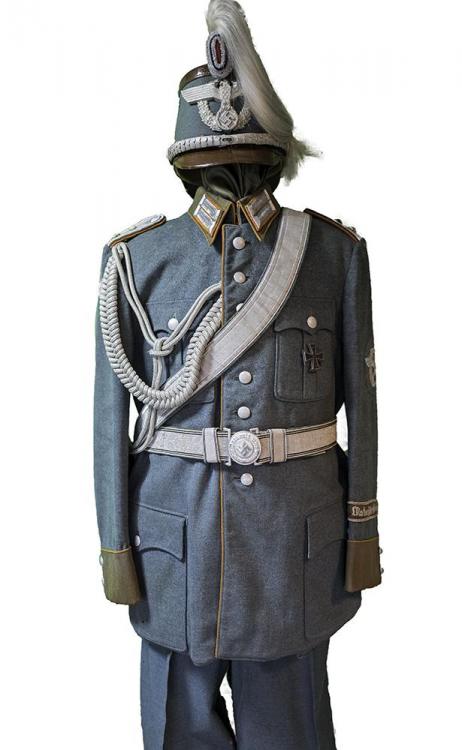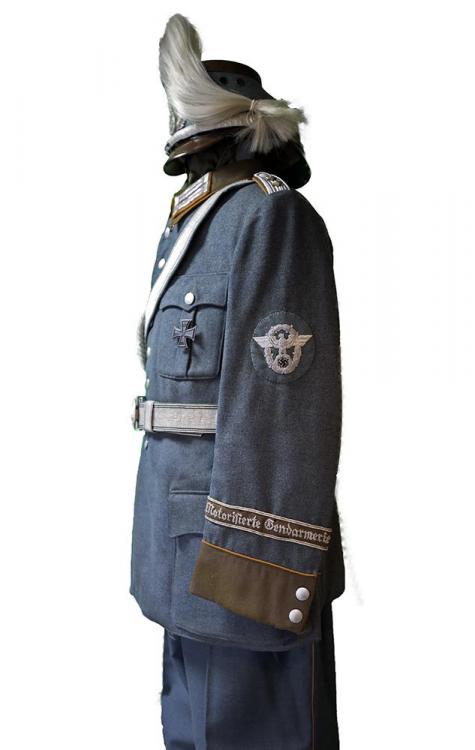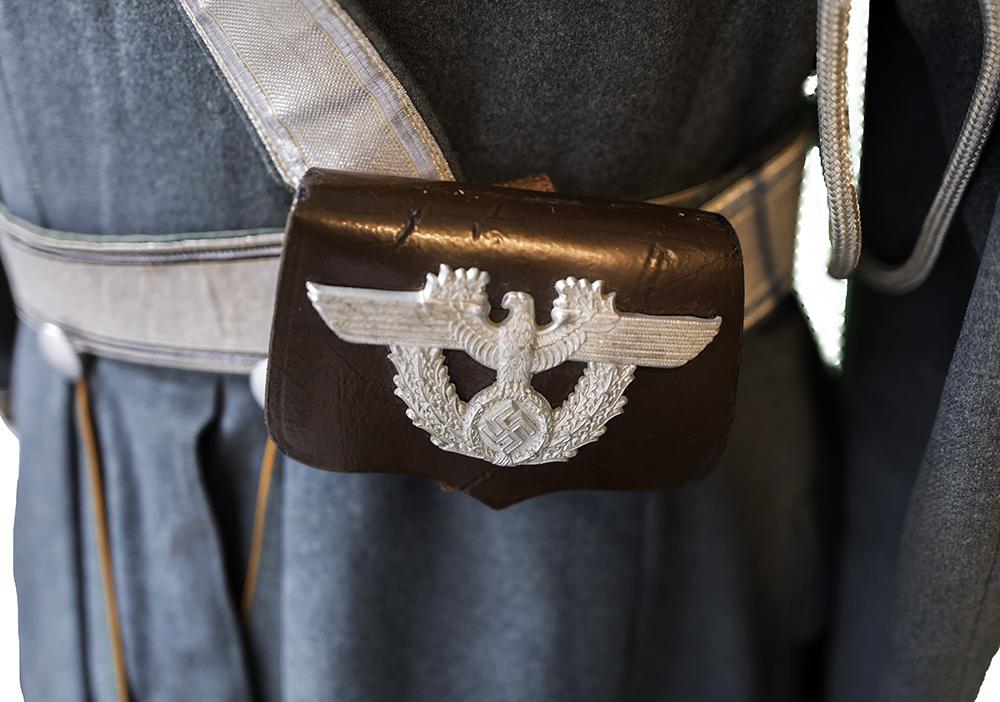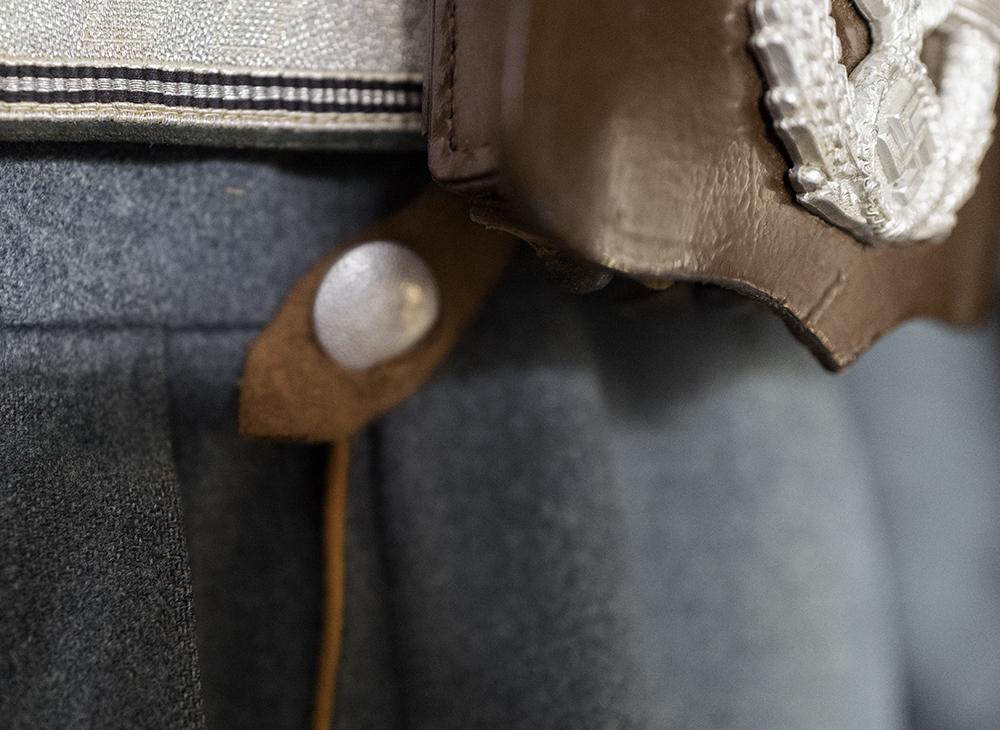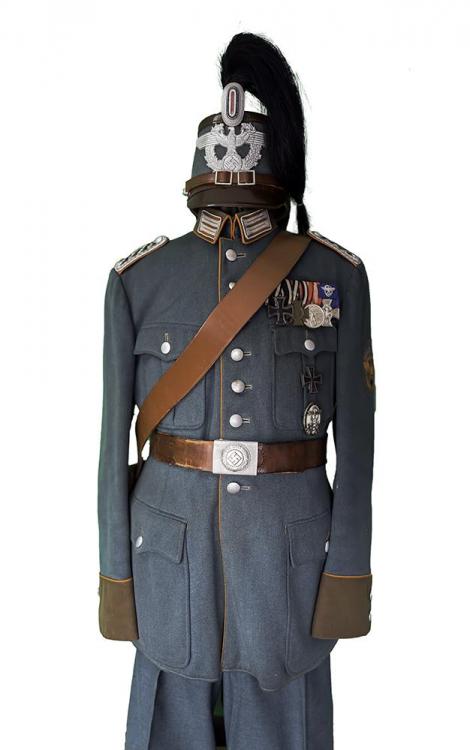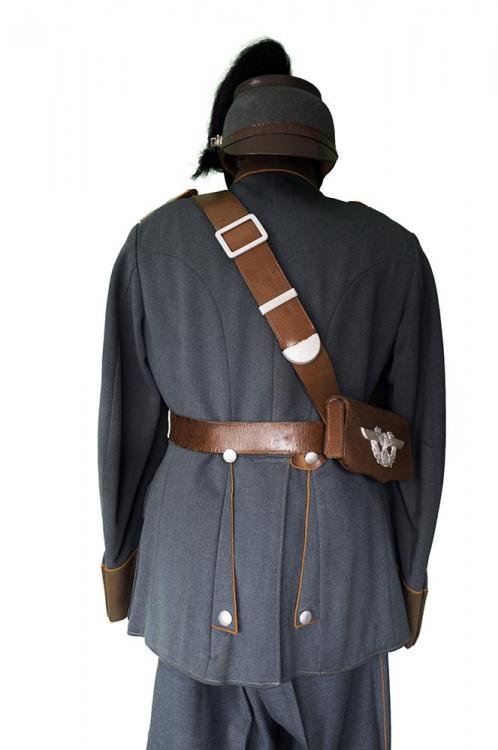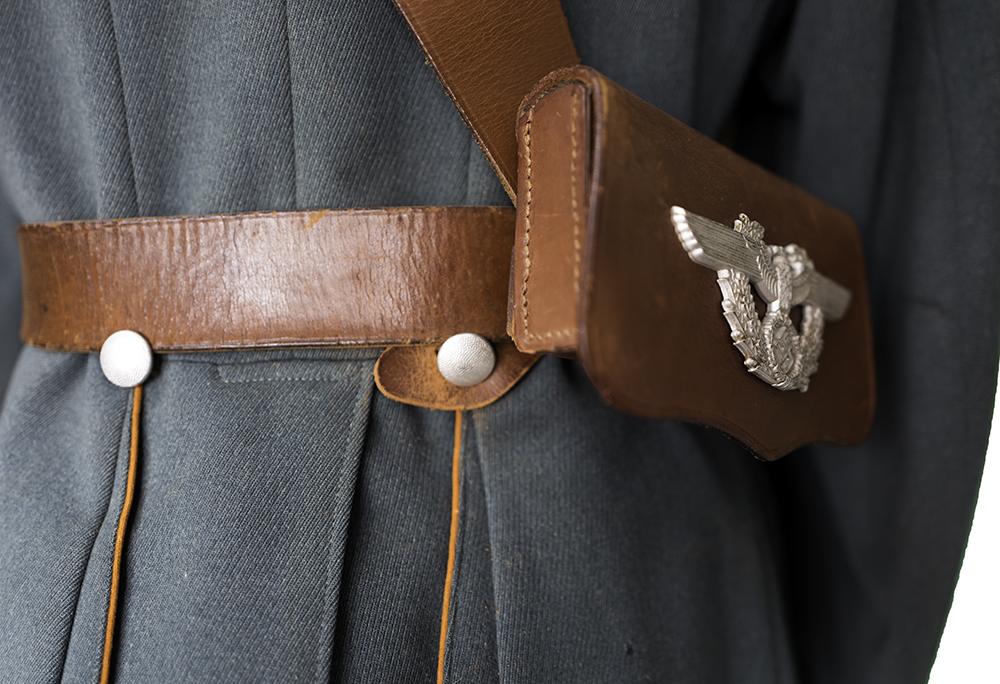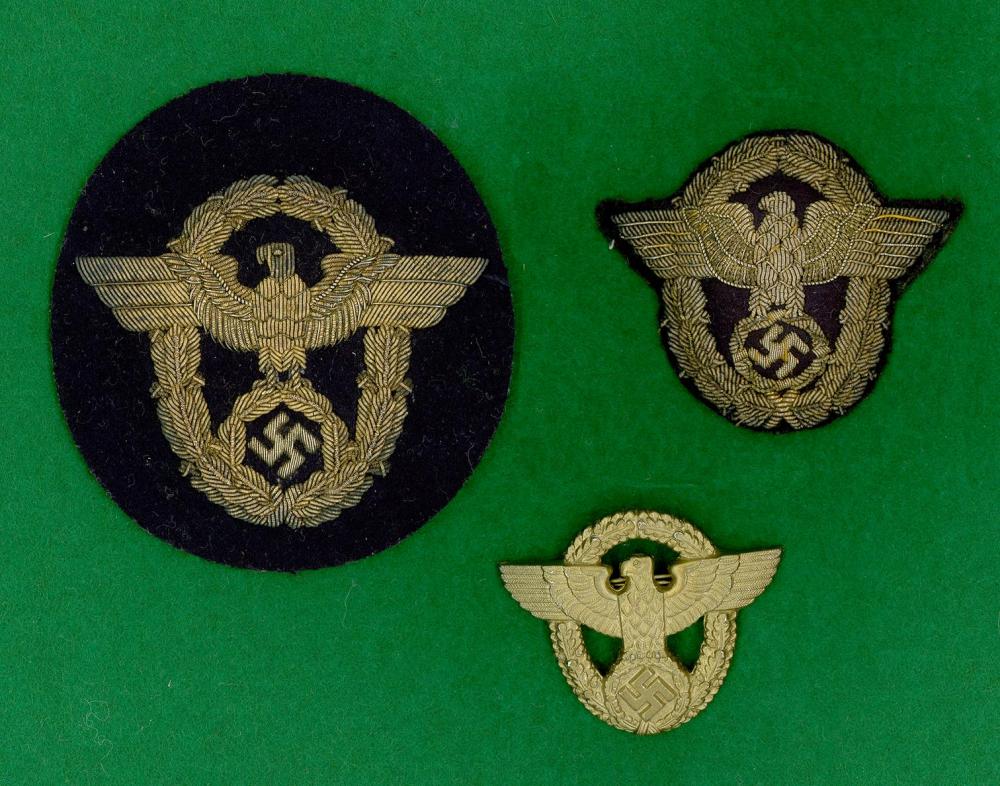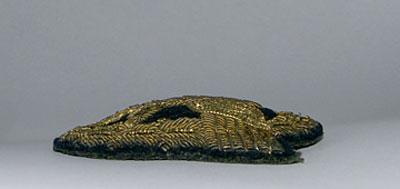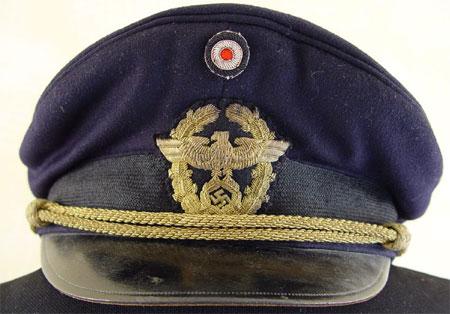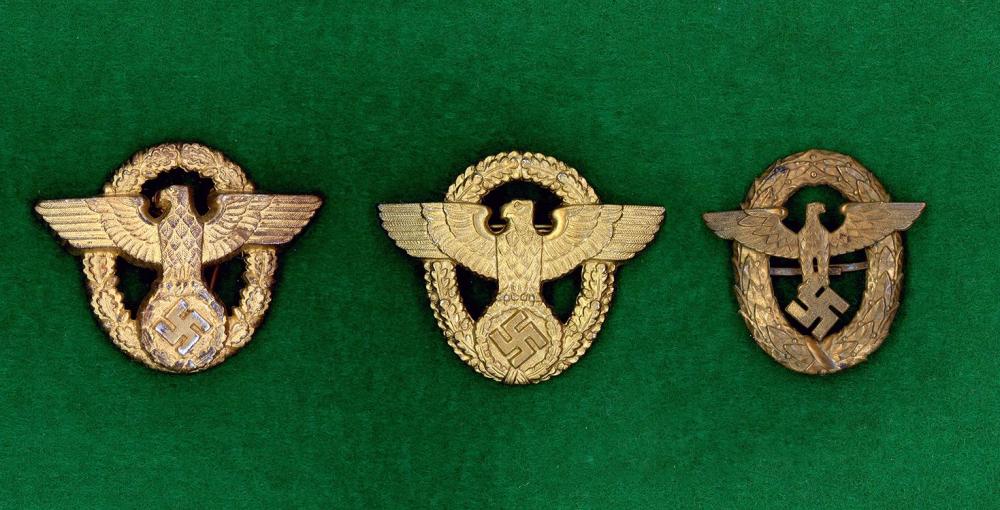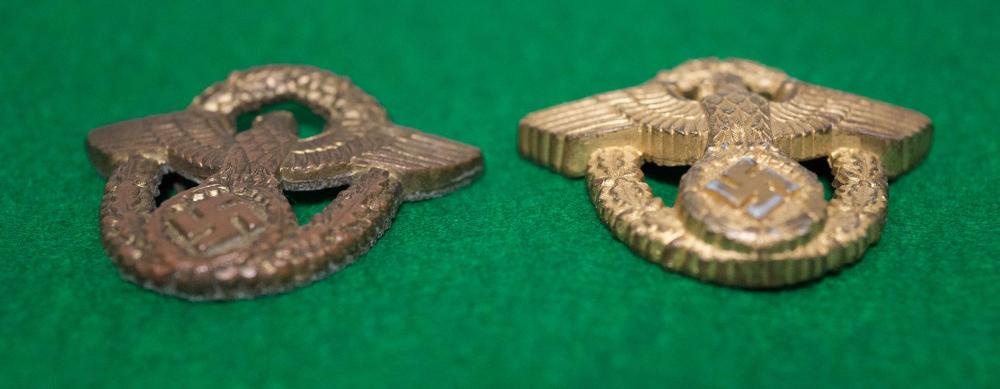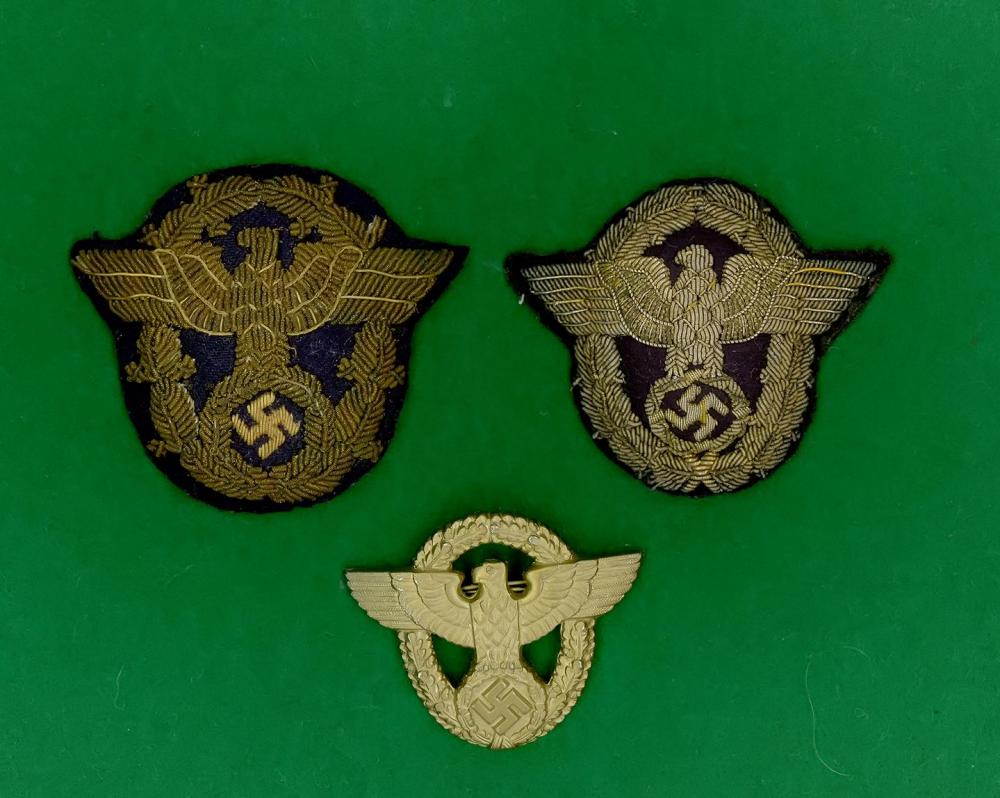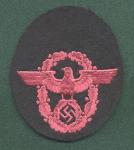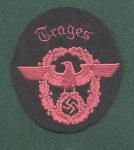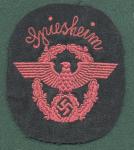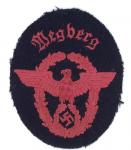-
Posts
344 -
Joined
-
Last visited
-
Days Won
1
W.Unland last won the day on December 16 2023
W.Unland had the most liked content!
Contact Methods
-
Website URL
http://
Profile Information
-
Location
Japan
-
Interests
Police insignia and cloth
Recent Profile Visitors
2,042 profile views
W.Unland's Achievements
-
The Wasserschutzpolizei had NO special dress uniform other than the service uniform worn with a sword or dagger as appropriate. The auxiliary police units such as the Luftschutzpolizei, TENOpolizei and such had no specified full dress uniform. Neither did the Feuerwehr or female uniformed personnel. I surmise that there was no anticipation that these personnel would ever be involved in parade or full dress situation. I would invite anyone having photographs of full dress uniforms in wear to post same. Regards, William Unland
-
The Schutzpolizei and Schutzpolizei d. Gmeinden wore a black trimmed tschako with black plume with the M1936 piped service tunic. They wore a white leather belt and cartridge box belt with a black cartridge box. These white belts were retained by the unit and only issued for use. Few survived the war as they became obsolete when hostilities commenced. Finally, the traffic service of the Schutzpolizei, who wore a white service tunic had their own specified dress uniform. They wore a white lacquered tshako with gold colored fittings and a black plume with the white service tunic and black trousers. A brown leather belt with gold colored buckle and a brown leather cartridge box belt with gold fittings and brown cartridge box with gold fitting was specified in the regulations of 1936. There are photos, however; of traffic NCO's wearing the white belt and cartridge belt. I assume this is due to their being assigned to Schutzpolizei units whom may not have had the brown accoutrements available. These gold trimmed belts and accoutrements are extremely rare.
-
Hello, Many police collectors are interested in the "combat" units of the police affiliated with the SS. My interest, however; is with the civil police. I guess that is natural as a retired cop. In any case in this thread I would like to discuss the full dress, or parade uniforms as specified in the 1936 consolidated police regulations. Dress accoutrements have only rarely survived as they have been of minimal interest to most collectors. It took many years to accumulate all of the items necessary to put this thread together. It is presented as a reference for those who may never encounter such uniforms in person. Firstly, the uniform of officer ranks of the ordnungpolizei wearing the green uniform is shown below. The tschako with a white buffalo plume was worn with the green service uniform with either belt trousers or piped trousers depending on the unit's determination. The tshako was brown trimmed for the Gendarmerie and black for other branches. A brocade belt and silver colored buckle in the SS pattern was worn as was a silver brocade cartridge belt, and cartridge box. The officer's shoulder cords were also specified. The Gendarmerie wore a brown box, with the Schutzpolizei and Gemeindenpolizei wearing a black box. The sword was also worn, but being in Japan I am not allowed to possess a sword so I cannot shot that. These first photos show such a dress uniform for an officer of the Gendarmerie. The next photo detail the attachment of the cartridge box to the belt, and the attachment to the tunic itself. There are many photos of the box buttoned to the rear buttons of the tunic as shown, even though it seems clumsy to me. The officer's cartridge box was much smaller than that of the NCO. It was also always in leather whereas the NCO boxes were often in imitation leather, and lacquered cloth. The NCO boxes were also often not able to be opened. They were just for appearance. The officer's boxes were fully functional. Next is the dress uniform as worn by NCO ranks of the Gendarmerie. The brown trimmed tschako with black horsehair plume was worn with the 1936 piped service tunic. This was worn with a brown leather belt with silver buckle and a brown leather cartridge belt and box. These cartridge boxes and belts were retained by the unit and only issued for use. After the war the belts were repurposed and very few have survived.
-
And finally here is a photo of the two types of cap insignia with a sleeve insignia to show relative size. Metal gold colored cap insignia was also used by the traffic police of the Schutzpolizei. Consequently it is impossible to tell if any given gold colored insignia was used by the WSP or not. The bullion insignia however are unique to the WSP, and are quite striking. They are some of the most complicated and beautiful of NS insignia. They are also 100's of times rarer than an SS eagle, but sadly very, very underappreciated. Whomever made these was extremely skilled. Making the insignia with a vaulted shape and getting the lines straight in the finished product would not have been an easy thing to do. Finally here is a photo showing the vaulted shape of the bullion insignia, and a second photo showing such an insignia on mounted on a cap. Thanks for looking, I hope some might find it of interest. William Unland
-
Hello, It has been a long time since I posted a topic on police items. Here I would like to illustrate the different types of insignia worn on the schirmmutze, ie; dress peak caps, of the waterways protection police. The WSP was a very small branch of the consolidated German police force. Most of the ranks were officer grades with some NCO ranks in the large jurisdictions such as commercial harbors. All ranks wore a navy style blue topped cap with a fiber brim. No braid was worn on the brim unlike the navy. All ranks wore a police insignia consisting of a NS eagle encircled by a wreath on the band of these caps. There were two types of insignia utilized, the common stamped gold finished aluminum and the unique to this branch embroidered gold bullion. NCO ranks wore a metal insignia whereas officers had the option of wearing the metal or the hand embroidered bullion insignia. The bullion insignia would have been significantly more expensive so I imagine only higher ranks and those in administrative positions would have chosen this option. it is important to remember that most WSP officers were former navy junior officers forced into police service when the police was "purged" of undesirables in 1934. The photo below shows the three types of metal insignia used. The example on the right is the M1934 eagle which lacks the small wreath around the swastika and has an eagle facing right like early political insignia. These were used until 1936 when the more robust M1936 insignia was introduced. The middle insignia is an example of this, the most commonly used type. The insignia on the left is a so called officer's grade metal insignia. It is made with more detail and a deeper, more pronounced stamping. These also have three prongs on the reverse. Although most commonly used by officers these were a more expensive option available to any rank, and these insignia are seen being used by NCO's in period photographs. This next photo demonstrates the differences between the standard and premium grade metal insignia. It is easy to see the higher "standout" of the "officer" grade insignia on the right. The more interesting WSP schirmmutze insignia was the bullion embroidered type. Since the WSP officers came from the navy they were used to a high profile bullion badge on their caps. They continued this tradition when they entered the police. These officers had bullion police insignia made to order by naval insignia shops which produced insignia as shown below. Each of these is different as they were all one off orders. No templates were used because these are highly padded and vaulted, just like navy insignia. The two examples shown here are the only one I have ever seen. The one on the left has a typical three wing feather execution while the one on the right shows six feathers. The details and execution of the insignia on the right are very high quality. The insignia on the left is more typical and uses synthetic "cellulon" to pick out the details on the eagle. A metal insignia is include to demonstrate the size of the bullion insignia. They are approximately 30% larger. This larger size is clearly seen in period photos where it almost appears like sleeve eagles are being worn on officer's caps.
-
Hello, Seeing the underside of the collar reinforces my belief that your tunic is a modified "combat" tunic. Early in the NS-zeit there were some odd Austrian variations, but usually limited to pocket shapes and such. Your tunic without the brown material on the collar is regulation. The civil police were required to wear the brown collar and cuffs to distinguish them from the military. Of course when units of the police were "militarized" there was no distiction, and same color cuffs and collar were used. The civil police were also allowed to wear such tunics but not while in contact with the general public; ie, training and work outside the city. I have seen photos of similar tunics with brown collar and no cuffs. Some seem to have been produced that way, but may be alterations. I dont believe it is of any significance other than adding cuffs would have been difficult, and the wearer didn't want to go to the trouble. The brown collar was deemed "enough" to meet the "spirit" of the regulations. Your tunic is a thoroughly documented variation and at least to me is more interesting than the typical M36 as it places it in a specific time period post 1941 during the war years. Regards, Bill Unland
-
Hello, Regarding the tunic without cuffs and simplified vent: I might be wrong but this looks like a field tunic modified by the addition of brown cloth atop a green collar. These "field" or "combat" tunics were authorized for militarized units of the police but were NOT to be used in civil service. I would hypothesize that the guy couldn't procure a M36 tunic and modified a war time "combat" tunic with the addition of the brown collar for civil use. There are many such variations seen. The civil police, particularly in rural areas, was not particularly good at following regulations during the war years. Regards, William Unland
-
Hello, There was no minimum size of unit to have name embroidered fire insignia, in fact, ALL should be named. Most fire eagles where purchased "blank" from a supplier and the name was added later, either by a tailor or unit itself. Of course large cities had the maker add the name at the time of manufacture. Many volunteer fire eagles have chain stitched or even hand sewn names. The colors of the thread used for the names often does not even match the eagle. This is very common. Since these wearers were mostly volunteers, I think naming was a matter of pride as much as regulation. Here is a factory blank: And the same pattern with name added: And lastly an eagle with a locally added chain stitched script name: What makes this example VERY unususal is that the eagle itself is hand embroidered. Regards, W.Unland
-
Hello, This will be of interest only to die hard police collectors I'm afraid. As we know Police sleeve eagles were either machine woven or machine embroidered for NCO grade personnel. Hand embroidery was limited to silver and gold wire on officer grade insignia. The sleeve insignia presented here appears from the obverse to be a typical machine embroidered fire department sleeve insignia of a know pattern. However when one looks at the reverse it is clear that this insignia is entirely HAND EMBROIDERED. This is the only such hand made NCO eagle that I have ever seen. It has been suggested that it might have been a manufacturer's proof, or master pattern. This hypothesis is supported by the fact that the edges have been dyed black so that no white support material will show from the front or sides, an uncommon small detail that I have only seen once before, on an exceptional officer's eagle. Of course it is equally possible that some volunteer fireman's wife made this for him at her kitchen table. The details are quite striking, and clearly the maker was very skilled. The waviness in the wings is due to stretching of the base material and not an unsteady hand. This insignia is presented to demonstrate that an open mind must be kept when evaluating civil police insignia. The quality, pattern, and even size variations seem endless, particularly with regard to these fire department related birds. There were thousands of different fire departments and each had its own insignia. It is not hard to imagine that many were locally made. Although there have been some hand embroidered reproductions on the market the last few years I feel VERY confident that this is an authentic period produced insignia. It is certainly one of a kind. Regards, William Unland



